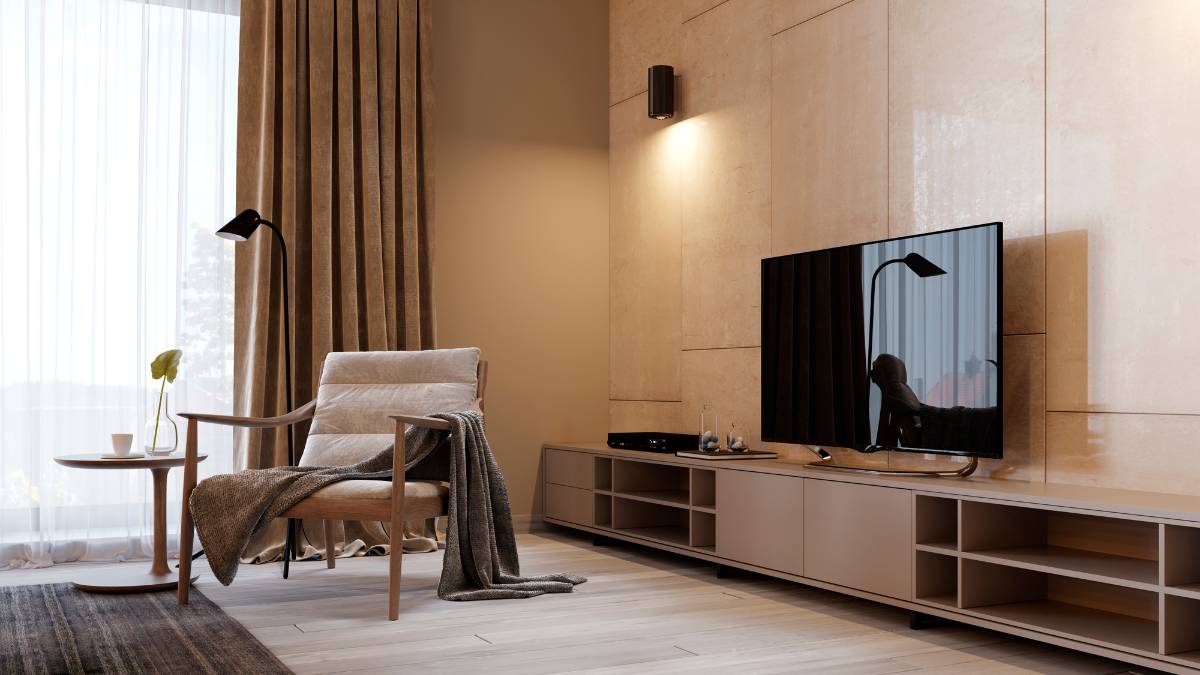You know that your space needs a ceiling fan — the question is, which one? Ceiling fans are extremely useful fixtures in the home, improving air circulation and reducing perceived temperatures to keep energy costs low and comfort high. Plus, ceiling fans come in many different sizes and styles to suit every space.
If you’re looking to purchase a new low-profile ceiling fan, then here’s a useful guide to some of the common pros and cons, to help you make the right choice for your home.
Pro: More Headspace

Flush-mount ceiling fans, which are also called low-profile ceiling fans and hugger ceiling fans, leave no space between the ceiling and the fan’s motor. As a result, they extend only a few inches below the ceiling and into the overhead space of a room. This is ideal in rooms that have lower ceilings, as it allows you to maximize the space underneath the fan where you and your guests might walk. While a fan mounted with a down rod might extend too far into the overhead space and pose a danger to those moving to and fro in the room, a flush-mount should allow enough space to pass without bumping into the fan.
Plus, it helps to create the illusion of taller ceilings, as there will be more space underneath. This is why so many homeowners tend to be attracted to low-profile ceiling fans, as most every homeowner wants their ceilings to seem taller and their rooms more spacious.
Con: Less Airflow
Unfortunately, there is a significant downside to hugger-style ceiling fans. Because their fan blades rotate so close to the ceiling, there is not an optimal amount of space through which the blades can pull in air. As a result, this type of fan tends not to be as efficient as it could be at creating airflow within a room. Less airflow means less impact on the feel of the temperature within the space.
This isn’t to say that all low-profile fans are inefficient. As long as you invest in a reputable brand, like Hunter Fan hugger ceiling fans, you should be pleased by the amount of airflow your flush-mount fan provides in your low-ceiling space. However, it does mean that if you have the overhead space to hang a fan with a down rod, you should probably opt for a different style from a flush-mount.
Pro: Flexible Design

Some flush-mount ceiling fans are versatile. You can hang them as a hugger, close to the ceiling without any down rod to maximize overhead space, or you can install a down rod of any length, providing the fan with greater ability to create airflow and ensuring that air circulates in the living area of a room. This flexibility can be useful if you aren’t certain whether your ceilings are tall enough to permit a down rod. You can install your fan in a flush-mount fashion or experiment with a down rod to achieve the perfect balance of aesthetics and functionality.
Not all low-profile fans can have a down rod attached. If you want this feature in your flush-mount, you should look for it specifically while you are shopping for your new ceiling fan.
Con: Limited Size
Ceiling fans tend to come in a wide range of sizes, from just over a foot wide to more than 15 feet in diameter. This is to account for different sizes of rooms in which fans must create air circulation. Smaller rooms must have smaller fans, as longer blades will bump up against walls, and larger rooms must have larger fans, as there is much more air for the fixture to move around. You can find help determining the correct size of fan you need for your space.
However, if you have a particularly large space, you shouldn’t expect to find a single flush-mount to fit. Low-profile ceiling fans tend to come in smaller sizes, as they are designed for use in smaller rooms with lower ceilings. If you do want to use a hugger-style fan in a large room, you may need to install two or three fans throughout your space to ensure that air flows properly to achieve the comforting effect you desire.
You very well might benefit from a flush-mount ceiling fan in your space, but you should consider the size of your room and the height of your ceilings before making your final decision.
Related





